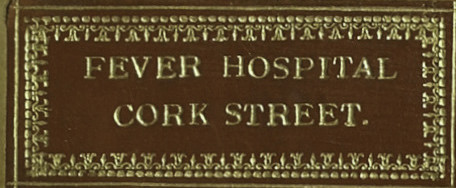In the early 1830’s The Mansion House Committee founded due to an outbreak of cholera in the city, instructed four of its members to inquire into the state of the poor. In one street in the Liberties they describe conditions they encountered.
“The front and back houses contain between fifty and sixty abandoned females, who are in the extremest state of penury, filth and moral and physical degradation, no words can give adequate description of their condition
In 1845 Thomas Wills published Facts concerned with the Social and Sanitary Condition of the Working Classes of the City of Dublin. Willis’s object in publishing his report was to ‘concentrate public opinion on the present condition of the labouring classes, with a view to its amelioration, by providing for them residences fit for human beings- by giving them a large and constant supply of pure water’ Willis was a member of the Board of Guardians of the North Dublin Union. He decided to research a statement made about the death rate of children inside the Union and compare these to death rates outside it, and choose St Michan’s parish where he conducted a house to house survey. He was at that stage interested only in infant mortality. He then decided that he had sufficient data to study the mortality rate of the entire parish. His figures show that for children less than 12 months old, the mortality rate was 22.15 % .By age 5 more than half were dead and by the age of 21 years two thirds had died. This mortality rate he states is without parallel. St. Michan’s parish is in the north inner city. There is, he states one large sewer running through the centre of the parish. The majority of the houses have no necessaries and of those that do, very few are connected to the sewer. Residents were obliged to empty their toilets by carrying the contents to the sewer. There were no public necessaries, nor urinaries, water closets are unknown unless in public buildings and then only a dozen exist. Water is supplied to the district for four hours, three days a week. Rented houses generally did not have water pumped into the house; tenants were dependent on a public fountain. The public fountains were not constantly supplied. He went on to describe the problem of lack of cleanliness, of back lanes filled with rubbish. The same issues the fever hospital reports constantly refer to. Indeed he quotes from the hospital’s annual reports to enhance his arguments. He even quotes from reports of the years 1672, 1750 and 1772 which confirm the extent of the problem and how long it has festered for. This is perhaps the most articulate account of the sanitary state of inner city Dublin.
These were the prevailing conditions of the poor of Dublin and it was these conditions that acted as the spur for setting up the hospital. Though hospital management routinely expressed their outrage at the conditions they encountered they apparently never understood that the root cause of the problem was a laissez faire economic system that decried state assistance and preached self reliance. The conditions Whitelaw encountered in 1798 were still prevalent in 1845 and Whitelaw’s report gives some indication why this is so. Writing about the vast dunghills outside some dairies he observes that there are no laws that would enable a magistrate to interfere regardless of the consequence. Whitelaw commented that a police force that rarely bestowed a thought on the back yards of the poor was only performing half its task.
‘The stench of filth in an open street may be dissipated by an unobstructed current of air: but that arising from human excrement, in narrow yards, enclosed by lofty buildings, must operate with unchecked malignity.
Whitelaw wondered whether it was the duty of the magistrate to address these issues or whether the existing laws permitted him to do so. The introduction of a poor law system in 1834 modelled on existing English law was not universally welcomed. O’Grada makes the point that the focus of public health care was on the symptoms rather than the causes. Irish taxpayers were opposed to a welfare system modelled on the English Poor Law as they believed the country could not afford it. Daniel O’Connell shared this view.( Cormac O’Grada, A new economic history, 1780-1939, (Oxford, 2001) p98)
O’Connell was a land owner and therefore liable for any subsequent taxes needed to fund the proposed law.
The city itself had grown from a population of c182, 000 in 1800 to 258,369 in 1852 and the administrative system to deal with the population growth had not kept pace. At the beginning of the nineteenth century the Church of Ireland held responsibility for a range of welfare services from the relief of paupers, fire fighting and public health. The application of these services varied from parish to parish and was funded by local taxes levied by the church. By the late 1840’s the administrative system to deal with Dublin society was labyrinthine with a multitude of agencies dealing with different and overlapping functions. In 1843 Dubliners were taxed by sixteen distinct tax regimes, each collected separately. In 1849 the Dublin Improvement Act was passed. One section of this Act dealt with the problem of sewerage and empowered Dublin Corporation to force property owners to connect their houses to the sewerage system. This was merely the beginning of the solution to the unsanitary conditions of inner city Dublin. The need for Cork Street Fever Hospital remained as strong as ever.
